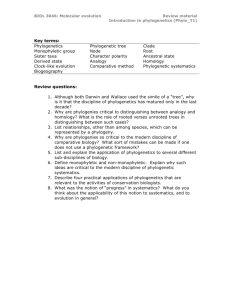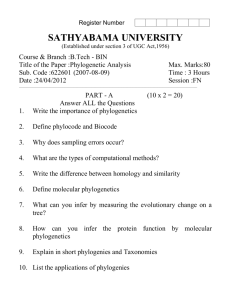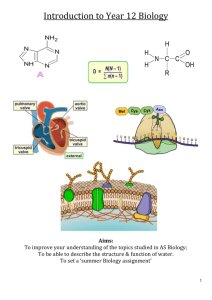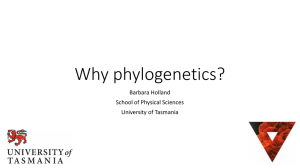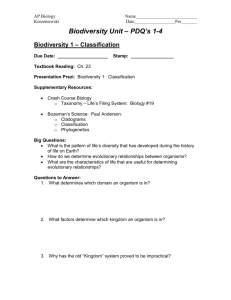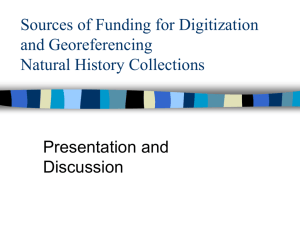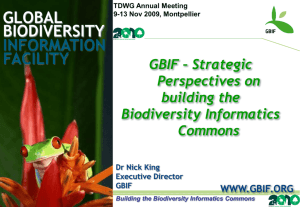Phylogenetic Biology YETI Blurb
advertisement
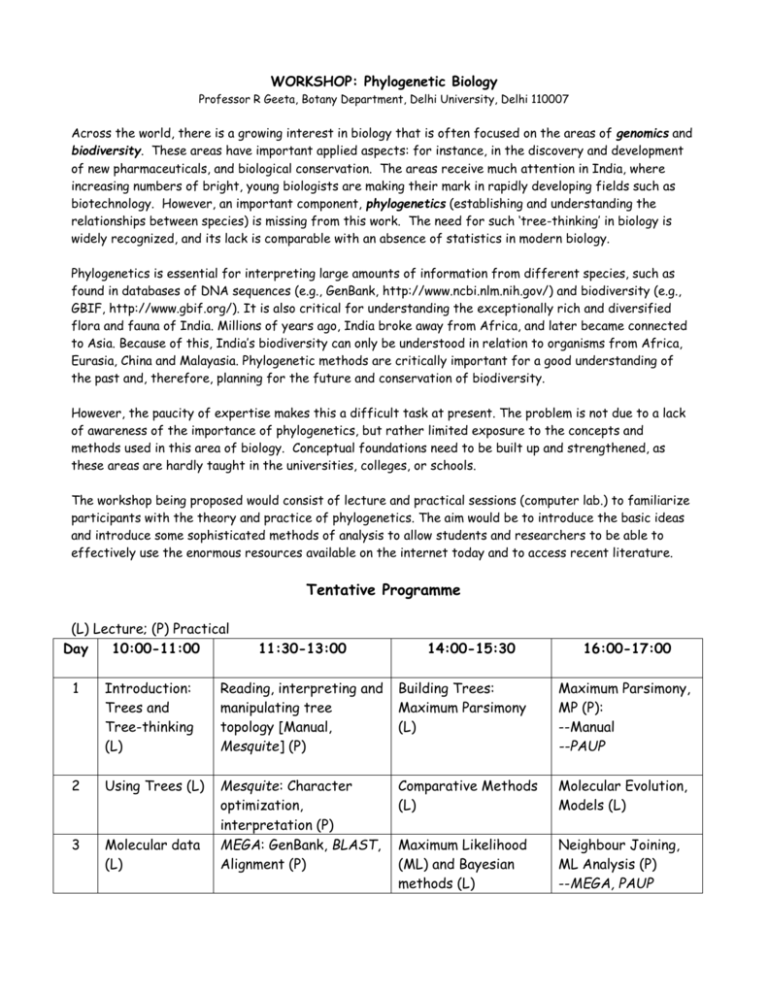
WORKSHOP: Phylogenetic Biology Professor R Geeta, Botany Department, Delhi University, Delhi 110007 Across the world, there is a growing interest in biology that is often focused on the areas of genomics and biodiversity. These areas have important applied aspects: for instance, in the discovery and development of new pharmaceuticals, and biological conservation. The areas receive much attention in India, where increasing numbers of bright, young biologists are making their mark in rapidly developing fields such as biotechnology. However, an important component, phylogenetics (establishing and understanding the relationships between species) is missing from this work. The need for such ‘tree-thinking’ in biology is widely recognized, and its lack is comparable with an absence of statistics in modern biology. Phylogenetics is essential for interpreting large amounts of information from different species, such as found in databases of DNA sequences (e.g., GenBank, http://www.ncbi.nlm.nih.gov/) and biodiversity (e.g., GBIF, http://www.gbif.org/). It is also critical for understanding the exceptionally rich and diversified flora and fauna of India. Millions of years ago, India broke away from Africa, and later became connected to Asia. Because of this, India’s biodiversity can only be understood in relation to organisms from Africa, Eurasia, China and Malayasia. Phylogenetic methods are critically important for a good understanding of the past and, therefore, planning for the future and conservation of biodiversity. However, the paucity of expertise makes this a difficult task at present. The problem is not due to a lack of awareness of the importance of phylogenetics, but rather limited exposure to the concepts and methods used in this area of biology. Conceptual foundations need to be built up and strengthened, as these areas are hardly taught in the universities, colleges, or schools. The workshop being proposed would consist of lecture and practical sessions (computer lab.) to familiarize participants with the theory and practice of phylogenetics. The aim would be to introduce the basic ideas and introduce some sophisticated methods of analysis to allow students and researchers to be able to effectively use the enormous resources available on the internet today and to access recent literature. Tentative Programme (L) Lecture; (P) Practical Day 10:00-11:00 11:30-13:00 14:00-15:30 16:00-17:00 1 Introduction: Trees and Tree-thinking (L) Reading, interpreting and manipulating tree topology [Manual, Mesquite] (P) Building Trees: Maximum Parsimony (L) Maximum Parsimony, MP (P): --Manual --PAUP 2 Using Trees (L) Comparative Methods (L) Molecular Evolution, Models (L) 3 Molecular data (L) Mesquite: Character optimization, interpretation (P) MEGA: GenBank, BLAST, Alignment (P) Maximum Likelihood (ML) and Bayesian methods (L) Neighbour Joining, ML Analysis (P) --MEGA, PAUP



